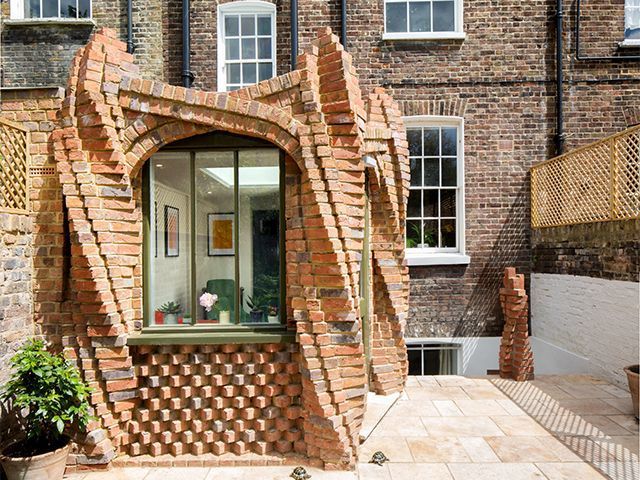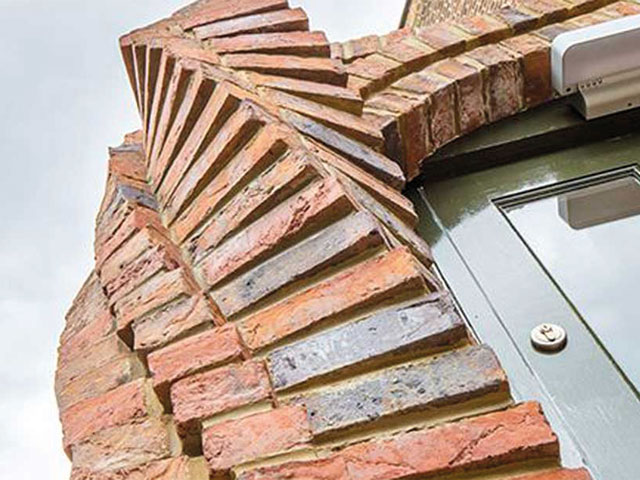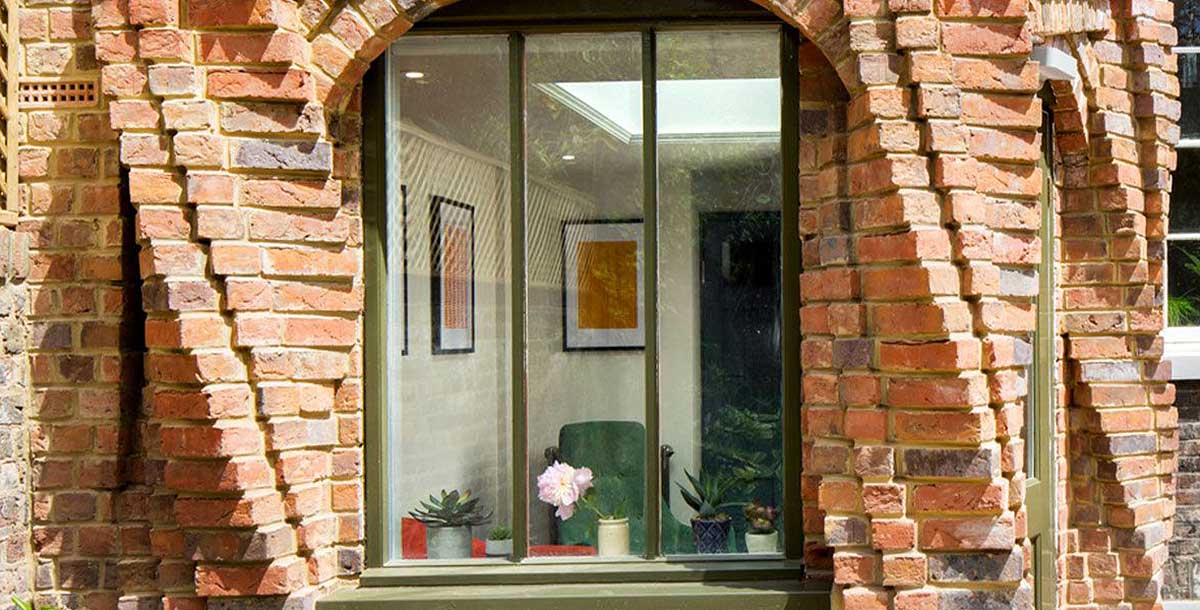The Twist House brick extension in north London
Architect James Beazer tells us all about his home's distinctive brick extension
Architect James Beazer tells how he created the distinctive brickwork of Twist House – his home’s eccentric extension.
James Beazer had a grand idea to build an extension with a difference. This extension to his north London home is used as a garden room and references brick expressionism of the 1920s and 1930s. It has four twisting self-supporting columns, which give the exterior the feeling of movement.
Grand Designs magazine spoke to him about how his creative concept became a reality.
Your extension looks like the punk offspring of the main Georgian building, was this the intention?
It’s a mix of things. The aim was trying to get the brickwork to do more. I wanted to design something sculptural.

Photo: Juliet Murphy
Are architects not being creative enough with bricks?
There’s a resurgence of techniques but at the more sculptural end, there’s less of it. In previous eras, London was full of buildings with incredible brickwork.
The Fitzrovia area is a good place for this. You walk down streets and look up at buildings and it’s all around. The joy of more decorative buildings has been lost in recent times.
Working with spirals looks a complicated business…
Rotating columns have been around for a long time – twists were used on Tudor chimneypots – but working with them is tricky, so we came up with a technique. My practice, Urban Mesh, devised a rotating template, so that as the twist rises it can be checked, keeping the construction straight.
We spent quite a bit of time working out the best way to do this using a combination of 3D software and more manual means and practised twisting by dry stacking.

Photo: Juliet Murphy
Were you inspired by a particular architect?
In the past, I studied the work of Fritz Hoger, a German designer who was around in the 1920s and 1930s. He was part of the brick expressionism movement.
What was the build cost?
It’s tied in with the renovation of the house, but I’d say it was around £70,000. It took a month and a half to build.









